Bedroom Furniture Measuring and Placement Guide
How to Measure for a Bed
Choosing the right size bed is a key factor in the overall feel and function of your bedroom. Ideally, a bed should complement both the space and the scale of the other furniture in the room. There are also other things to consider, like is there enough clearance around the bed and is it blocking any closets or windows. No matter what type of bed you choose, you want to make sure it’s a good fit. So, before you make that new purchase, take a moment to read our tips and instructions on how to measure for a bed.
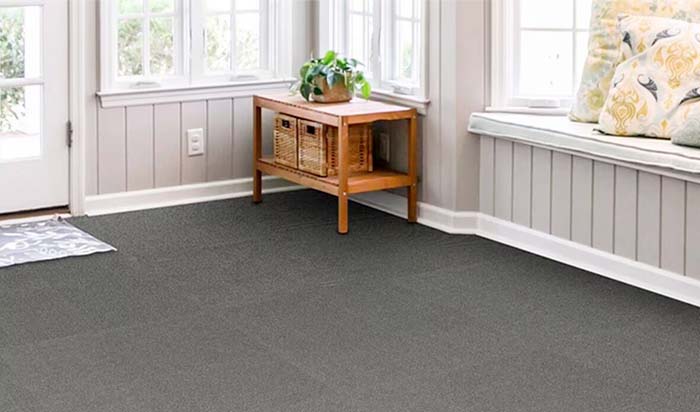
Examine the Room
To understand the bed size and amount of furniture your bedroom can comfortably accommodate, you'll need to determine how much space you're working with. Use a measuring tape to find the approximate length and width of the bedroom. Large bedrooms can accommodate king size beds and multiple furniture pieces without feeling cramped. If space is limited, consider purchasing a queen or full-size bed with a low profile frame and one or two essential pieces of furniture.
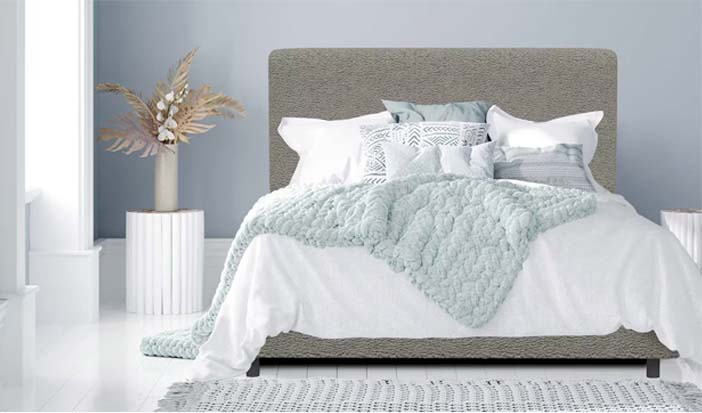
Decide on Placement
Once you're done examining the bedroom, decide exactly where you'd like to place your bed. Ensure that the bed will not block any closet doors, windows, or natural pathways. If purchasing a bed with storage drawers make sure to allow adequate space to fully extend the drawers. It may also help to draw up a floor plan to see how the bed will look with other pieces of furniture in the room.
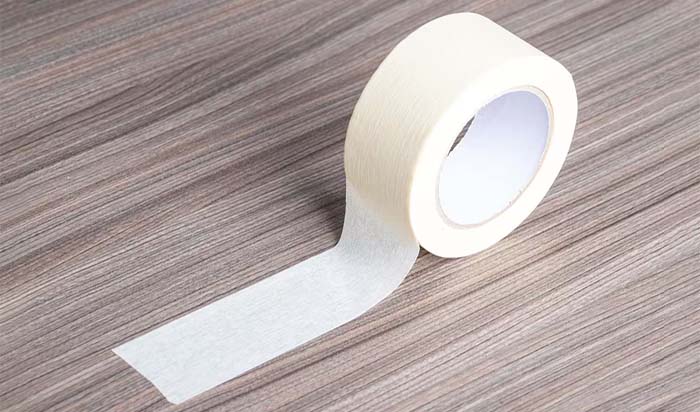
Create an Outline
To better envision how your new bed will look in the space, you'll need to create an outline using the overall dimensions of the bed. For overall length, measure from the headboard to the very end of the bed frame. For overall width, measure the outside of the bed frame from side to side. With the beds overall dimensions in mind, use masking tape to make a rectangular outline of the bed frame on the floor. If you plan on adding additional bedroom furniture, get the overall dimensions of those pieces and incorporate them into your floor plan.
A Few Things to Consider
Sitting Height:
The sitting height of a bed is measured from the floor to the top of the mattress and should include the frame, mattress, and box spring (if applicable). Although this measurement is often overlooked, it is still an important factor for both comfort and function. You want to ensure that you can safely and easily sit down and rise up from the bed. Rule of thumb states that an ideal bed height is knee level. If a bed is too high, shorter or physically challenged people may struggle to get in and out. If it’s too low, taller people will have to awkwardly crouch down to get into bed.
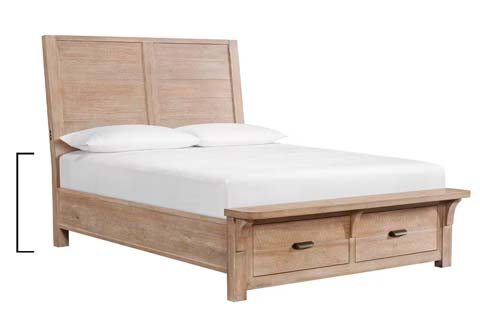
Overall Height:
The overall height of a bed is measured from the floor to the highest point of the headboard. This measurement will give you an idea of where the headboard will sit when placed against a wall or window, or if it is on-scale with the rest of your bedroom furniture. Overall height is really a matter of style and personal preference. Beds with a taller frame create a dramatic focal point in a bedroom, while shorter ones may feel cozier and may coordinate better with the other furniture in the room.
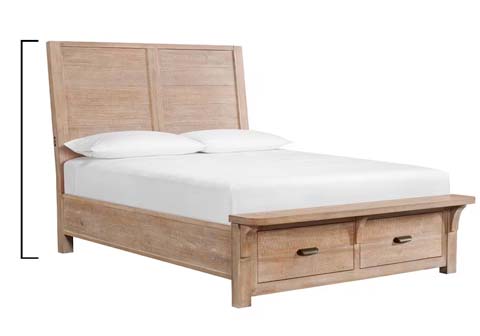
How to Measure Nightstands
Nightstands are an essential part of any bedroom. They allow easy access to lighting and other important items like cell phones, books and reading glasses. In order to have all your essentials comfortably at hand, you’ll need to choose a nightstand that’s the right size. There are several factors to consider when choosing a new nightstand, including the size of the bedroom, the height of the bed and the scale of the other furniture in the room. Ideally, a nightstand should be proportional to the bed so the room feels balanced and harmonious. To ensure that your new purchase is a good match, we’ve created a list of suggestions and measuring instructions to help you find the perfect nightstand.
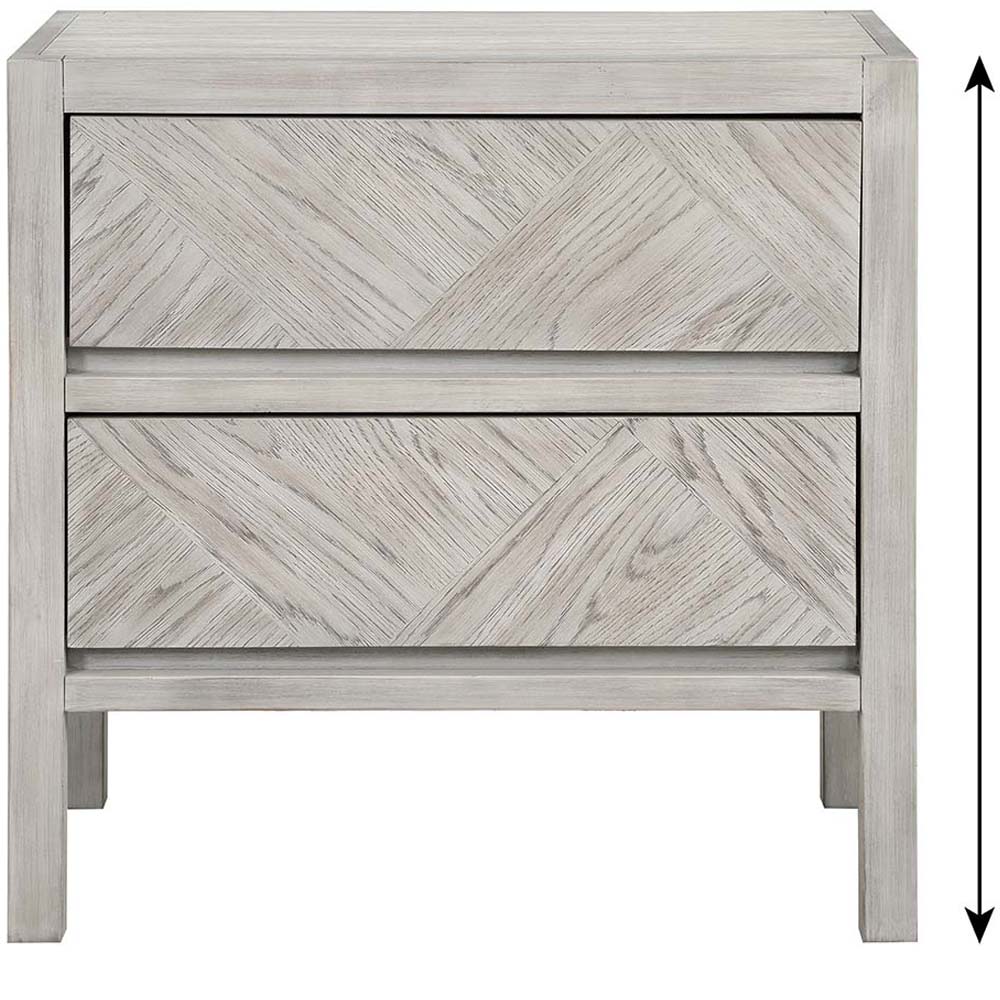
Nightstand Height
The overall height of a bed is measured from the floor to the As a general rule, the top of your nightstand should be level with the top of your mattress, or at least within 2 inches of it. This will allow you to easily access all your essential items during the night. To determine the height of your bed, you'll need to measure from the floor to the top of the mattress. Be aware that platform beds are lower than most standard beds.
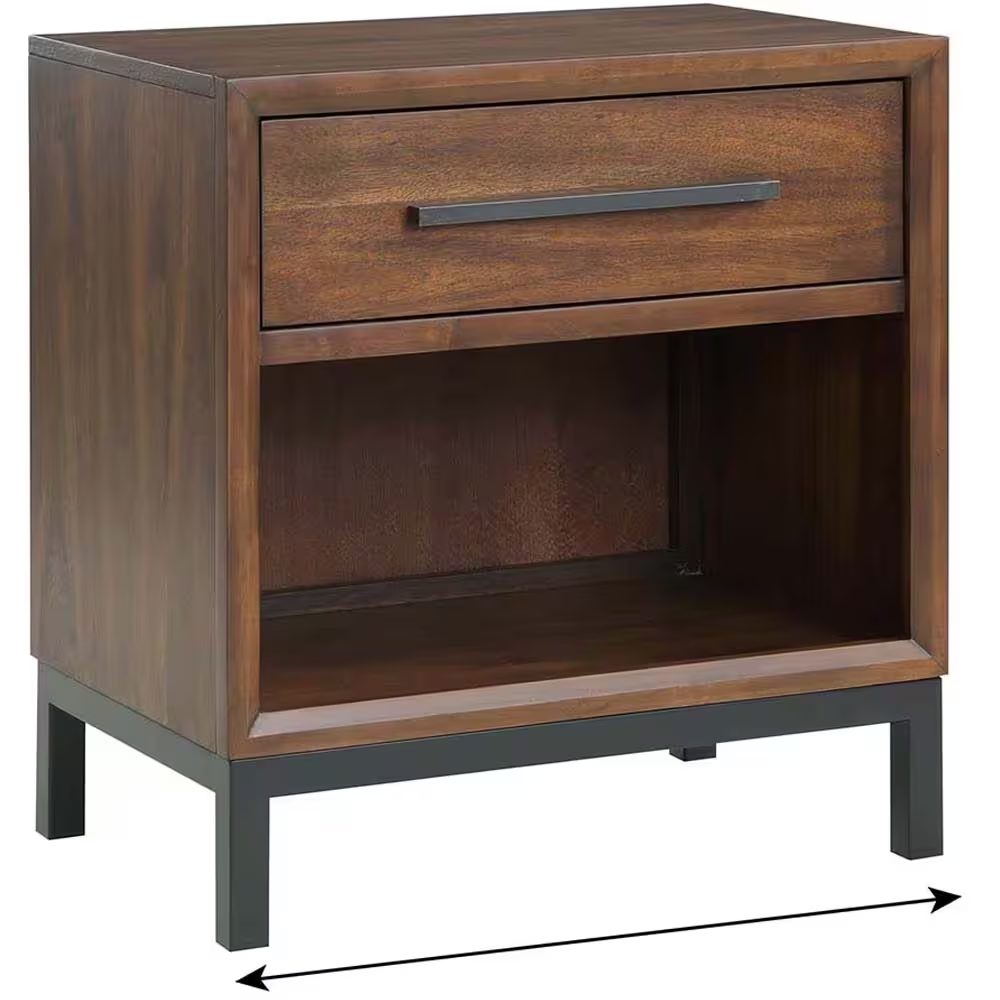
Nightstand Width
The width of a nightstand should be proportionate to the size of your bed. The average nightstand measures between 20" and 30" wide and works well with full and queen-sized beds. King and California King beds look best with nightstands that are deeper and wider, while twin beds look good with shallow nightstands that have slender frames. Remember to leave a minimum of 4" of space between the bedframe and the nightstand to accommodate bedding and still be within comfortable reach.
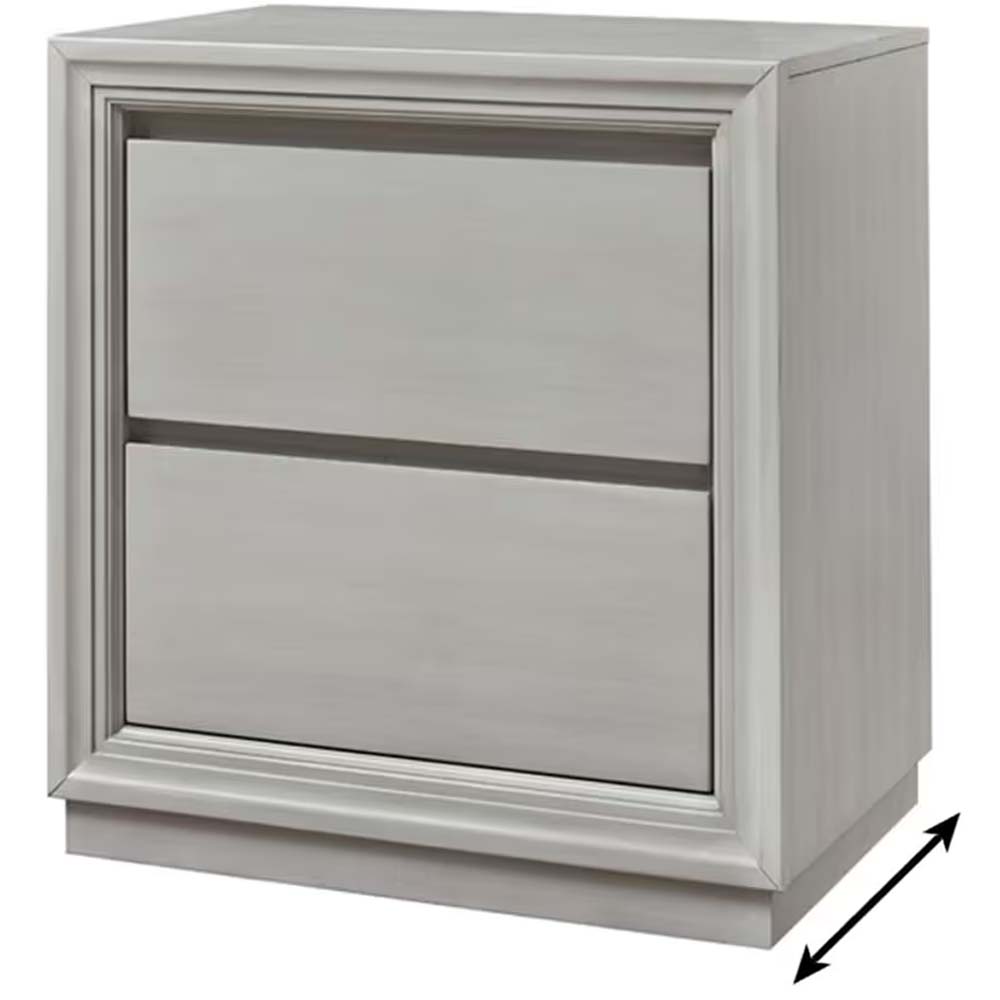
Nightstand Depth
The average nightstand measures between 12" and 30" deep. Most are capable of holding typical bedside items like lamps, phone chargers and books. Consider choosing a larger nightstand with more depth and storage options if you prefer to have numerous items bedside. A larger nightstand will provide more surface space.
How to Measure Dressers
With their storage capacity and counter space, dressers are one of the most important and functional pieces of furniture in the bedroom. They offer a safe place to store clothes and bedding, as well as display personal items like jewelry boxes and picture frames. Dressers, sometimes called chests, are available in a wide range of sizes and configurations, so you’re sure to find something to suit both your personal style and needs. Before you start shopping, read our list of tips and measuring instructions to help you choose a nightstand that will fit in your bedroom perfectly.
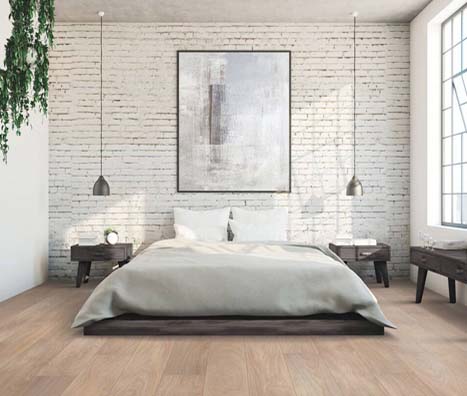
Examine the Room
Before you start shopping, you'll first need to get a good idea of what size dresser your bedroom can accommodate and where it should be placed. No matter the size of the space, a dresser requires a wall to rest against. This will give it both stability and prevent it from blocking any natural pathways throughout the room. Dressers can also be placed under a window if its height sits lower than the window sill. When deciding on placement, be aware of proximity to doorways, electrical outlets and heating vents. Consider creating an outline to envision how the dresser will look in your space. With the dresser's overall dimensions in mind, use masking tape to make a square or rectangle on the floor in your bedroom.
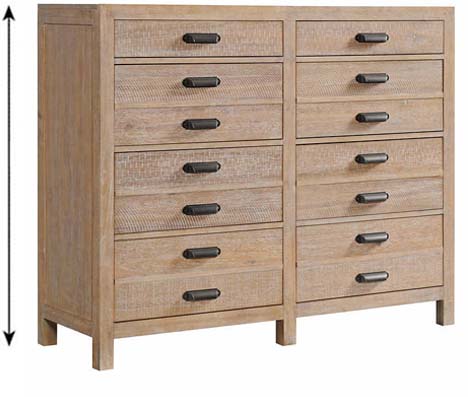
Dresser Height
To find the height of a dresser, measure from the floor to the very top surface of the dresser. Wide dressers leave more wall space above for decorating and can easily accommodate televisions, while tall dressers are a great option for smaller bedrooms because they take up less floor space. If you plan on placing the dresser against a wall, measure from floor to ceiling. If you'd like to place it under a window, measure from the floor to the window sill. If there is a mirror attached, remember to add that to the overall height as well.
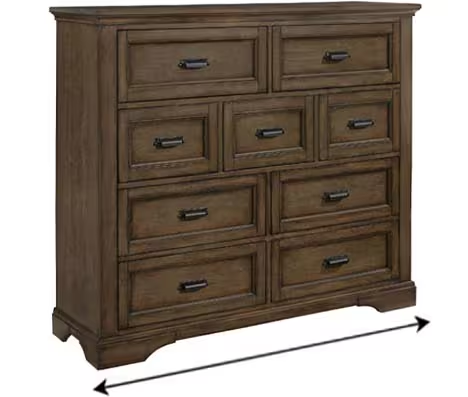
Dresser Width
Once you have decided on a location for your dresser, you will need to determine if it fits the space. Measure the length of wall you intend to place the dresser against and then compare that to the width of the dresser. This measurement can be found by measuring the dresser from side to side. If the dresser is near a door, make sure the door can fully swing open without touching it.
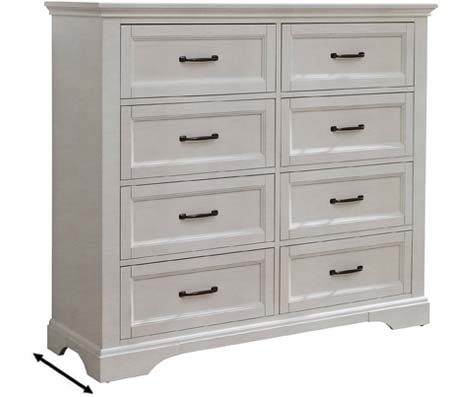
Dresser Depth
To find the depth of a dresser, measure from the front to the very back. If placing the dresser across from a bed or other piece of furniture, ensure there is at least 36" between the two. This will allow enough space for you to easily walk by and fully extend the drawers.
Helpful Tips & Information
Dressers vs Chest:
Dressers and chests are available in a wide range of sizes and configurations. The primary difference between the two is that dressers are usually wider and sometimes have a mirror attached, while chests of drawers tend to be taller and more narrow.
Standard Dimensions:
For reference, a standard horizontal dresser holds between 6-9 drawers and stands waist height at approximately 30" to 35". Standard depth ranges from 18" to 24", and width ranges from 40" to 80" depending on the model. Typical drawer depth is approximately 16" to 18" deep.
Prepare for Delivery

To ensure a smooth delivery, determine the pathway that will be used to bring the bedroom furniture into your home and to the exact room in which it will be placed. Measure all door frames, entryways, hallways, and staircases to ensure the furniture can be accommodated and remove any hazards in that pathway. Safely secure your pet or pets in a crate or spare room if they are easily frightened by strangers or unusual activity. If you live in a building with an elevator, measure the elevator door and the interior of the elevator. Remember to thoroughly inspect the furniture before delivery personnel leave.

